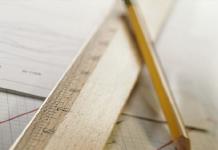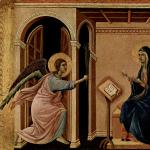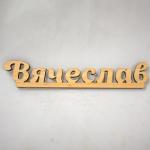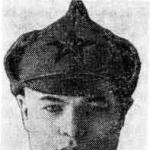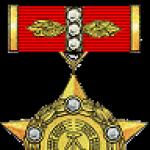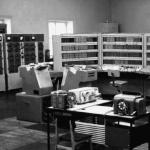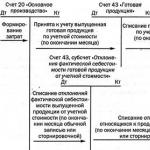Presentation on the topic "Logical foundations of a computer" in computer science in powerpoint format. This presentation for schoolchildren in grades 10-11 examines the logical foundations on which the operation of a modern computer is built. Author of the presentation: Sergeev Evgeniy Viktorovich.
Fragments from the presentation
Basic Logic Gates
The computer performs arithmetic and logical operations using the so-called. basic logic elements, which are also called gates.
- The “I” gate is a conjunctor. Implements conjunction.
- The OR gate is a disjunctor. Implements disjunction.
- The “NOT” valve is an inverter. Implements inversion
Components
- Any logical operation can be represented through conjunction, disjunction and inversion
- Any computer element, no matter how complex, can be constructed from elementary gates
Argument signals and function signals
Valves operate with electrical impulses:
- There is an impulse - the logical meaning of the signal is “1”
- There is no impulse - the logical meaning of the signal is “0”
Pulses are supplied to the inputs of the gate - the values of the arguments; a signal appears at the output of the gate - the value of the function
Logic circuit type "AND" (conjunctor)
Electrical circuit of two switches connected in series
OR logic circuit (disjunctor)
Electrical circuit of two parallel connected switches
NOT type logic circuit (inverter)
Electrical circuit with one circuit breaker
Conjunctor
- Signals 0 or 1 are supplied to the conjunctor inputs
- At the output of the conjunctor, signals 0 or 1 appear in accordance with the truth table
Disjunctor
- 0 or 1 signals are supplied to the disjunctor inputs
- At the output of the disjunctor, signals 0 or 1 appear in accordance with the truth table
Inverter
- 0 or 1 signals are supplied to the inverter inputs
- 1 or 0 signals appear at the inverter output in accordance with the truth table
Binary number adder
- Any mathematical expression, no matter how complex, can be represented as a sequence of elementary mathematical operations
- All mathematical operations in a computer come down to adding binary numbers
- The microprocessor is based on binary number adders
Trigger
- The most important structural unit of RAM and processor registers
- Consists of two logical elements “OR” and two logical elements “NOT”
Trigger operation
- In the normal state, a “0” signal is applied to the S and R flip-flop inputs and the flip-flop stores “0”.
- When a signal “1” is applied to the input S, the trigger takes the value “1” at the output Q
- When a “1” signal is applied to input R, the trigger returns to its original state - stores “0”
INTRODUCTION: We got acquainted with the structure of a computer and learned that in the process of processing binary information, the processor performs arithmetic and logical operations. Therefore, to get an idea of the structure of a computer, it is necessary to become familiar with the basic logical elements that underlie the construction of a computer and operate similarly to switching circuits. To understand the principle of operation of such elements, we will begin this acquaintance with the basic initial concepts of formal logic. The term “logic” comes from the ancient Greek logos, meaning “word, thought, concept, reasoning, law.” INTRODUCTION: We got acquainted with the structure of a computer and learned that in the process of processing binary information, the processor performs arithmetic and logical operations. Therefore, to get an idea of the structure of a computer, it is necessary to become familiar with the basic logical elements that underlie the construction of a computer and operate similarly to switching circuits. To understand the principle of operation of such elements, we will begin this acquaintance with the basic initial concepts of formal logic. The term “logic” comes from the ancient Greek logos, meaning “word, thought, concept, reasoning, law.” switching circuits. switching circuits. 2

Logic is a science that studies the laws and forms of thinking. Stages of development of logic: Stage I - formal logic. The founder, Aristotle (BC), introduced the basic forms of abstract thinking. Stage II - mathematical logic. The founder, the German scientist and philosopher Leibniz (), attempted logical calculations. Stage III - mathematical logic (Boolean algebra). The founder - English mathematician George Boole (), introduced the alphabet, spelling and grammar for mathematical logic. 3

Algebra of logic is a mathematical apparatus with the help of which logical statements are written (encoded), simplified, calculated and transformed. A statement (judgment) is a declarative sentence about which one can say whether it is true or false. A statement can take only one of two logical values - true (1) or false (0). Examples of statements: Examples of statements: Earth is a planet of the solar system (true statement). Earth is a planet of the solar system (true statement) > 10 (false statement) > 10 (false statement). 4 10 (false statement). 3 + 6 > 10 (false statement). 4"> 
The statement is a judgment that needs to be proven or disproved, for example, the sum of the interior angles of a triangle is 180°. Reasoning is a chain of statements or statements related to each other in a certain way, for example, if you want to start working on a computer, you must first turn on the power supply. Inference is a logical operation, as a result of which a new judgment is obtained (derived) from one or more given judgments. The field of knowledge that studies the truth or falsity of statements (judgments) is called mathematical logic. Statements in mathematical logic are called logical expressions. 5

Explain why the following sentences are not statements: Explain why the following sentences are not statements: When leaving, turn off the light. When leaving, turn off the lights. What color is this house? What color is this house? Look out the window. Look out the window. 6

Statements can be simple or complex. Simple statement (Boolean variable) A simple statement (Boolean variable) contains only one simple thought. Logical variables are usually designated by letters of the Latin alphabet: A, B, C, D... contains only one simple thought. Logical variables are usually designated by letters of the Latin alphabet: A, B, C, D... For example, A = (Square is a rhombus). For example, A = (Square is a rhombus). Complex statement (logical function) A complex statement (logical function) contains several simple thoughts connected to each other using logical operations. contains several simple thoughts connected to each other using logical operations. For example, For example, F(A,B) = (It was raining, (and) a cold wind was blowing). F(A,B) = (It was raining, (and) a cold wind was blowing). A B A B 7

The value of a logical function can be determined using a special table (truth table). Truth table - a table that lists all possible values of incoming logical variables and their corresponding function values. For example: The value of a logical function can be determined using a special table (truth table). Truth table - a table that lists all possible values of incoming logical variables and their corresponding function values. For example: A and B logical variables, n = 2 A and B logical variables, n = 2 F logical function F logical function The number of rows (q) in the truth table can be calculated by the formula: The number of rows (q) in the truth table can be calculated by formula: q = 2 n q = 2 n 8 AB F (A,B) F (A,B)

A logical element (gate) is a part of an electronic logic circuit that performs an elementary logical operation. Each logic element has its own symbol, has one or more inputs to which signals of “high” voltage (“1”) and “low” voltage (“0”) are supplied, and only one output. 9

Basic logical operations 1. Negation (inversion), from lat. inversio - I turn it over: corresponds to the particle NOT, the phrase NOT TRUE, THAT; corresponds to the particle NOT, the phrase NOT TRUE, THAT; designation: not A, ¬A, A designation: not A, ¬A, A truth table truth table Inversion of a logical variable The inversion of a logical variable is true if the variable itself is false, and, conversely, the inversion is false if the variable is true, example: A= (It's snowing outside). A=(It is not true that it is snowing outside) A=(It is not snowing outside); A=(It’s not snowing outside); 10 A A01 10

11 2. Logical addition (disjunction), from lat. disjunctio - I distinguish: corresponds to the conjunction OR; designation: +, or, or, V; truth table: A disjunction is false if and only if both statements are false. example: F=(The sun is shining outside or a strong wind is blowing); ABF

3. Logical multiplication (conjunction), from lat. conjunctio - I connect: corresponds to the conjunction I (in natural language: both A and B both A and B A together with BA A, despite BA A, while B); notation: x, *, &, u, ^, and; truth table: A conjunction is true if and only if both statements are true. example: F=(The sun is shining outside and a strong wind is blowing); 12ABF


Other logical operations 4. Implication (logical consequence), from lat. implicatio I closely connect: corresponds to the speech figure IF...THEN corresponds to the speech figure IF...THEN (in natural language: if A, then B B, if A B is necessary for A (in natural language: if A, then B B, if A B is necessary for A A is sufficient for B A is sufficient for B A only when B A only if B B then when A B then when A All A is B; All A is B; designation:, = > ; designation:, => ; 1414 ; designation:, => ; 1414"> 
Truth Table: Truth Table: 1515ABF The implication is always true except when A is true and B is false, example: If it rains, then the ground is wet. F = A B

5. EQUIVALENCE (equivalence), from lat. Aequivalens - equivalent. 5. EQUIVALENCE (equivalence), from lat. Aequivalens - equivalent. corresponds to speech figures EQUIVALENT: corresponds to speech figures EQUIVALENT: necessary and sufficient for if and only if; necessary and sufficient for if and only if; designation: =, ; designation: =, ; 1616

Truth Table: Truth Table: 1717ABF Equivalence is true if and only if both statements are simultaneously either true or false. example: I will go for a walk then and only then when I have learned all my lessons.

The order of logical operations: 1) operation in brackets; 1) operation in brackets; 2) denial; 2) denial; 3) logical multiplication; 3) logical multiplication; 4) logical addition; 4) logical addition; 5) implication; 5) implication; 6) equivalence. 6) equivalence. 1818

Task 1: Given two statements: A = (Number 5 is prime) B = (Number 4 is odd) Obviously, A = 1, B = 0. What are the statements: a) A __________________________ b) B __________________________ c) A and B _______________________ d) A + B _______________________ Which of these statements are true? Which of these statements are true? 19


Task 3: Write down the following statements in the language of logic algebra: Task 3: Write the following statements in the language of logic algebra: 1) I will go to Kyiv and if I meet friends, we will have an interesting time. 2) If I go to Kyiv and meet friends there, we will have an interesting time. 3) It is not true that if the weather is cloudy, then it rains if and only if there is no wind. 21


When studying the operation of various computer devices, one has to consider its logical elements in which complex logical expressions are implemented. Therefore, it is necessary to learn how to determine the result of these expressions, that is, to build truth tables for them. When studying the operation of various computer devices, one has to consider its logical elements in which complex logical expressions are implemented. Therefore, it is necessary to learn how to determine the result of these expressions, that is, to build truth tables for them. 24


The order of constructing truth tables from a Boolean expression: The order of constructing truth tables from a Boolean expression: 1) determine the number of variables; 1) determine the number of variables; 2) determine the number of rows in the truth table: 2) determine the number of rows in the truth table: q = 2 n q = 2 n 3) write down all possible values of the variables; 3) write down all possible values of the variables; 4) determine the number of logical operations and their order; 4) determine the number of logical operations and their order; 5) write down logical operations in the table 5) write down logical operations in the truth table and determine the value for each; truth and determine the value for each; 6) underline the values of variables for which F = 1. 6) underline the values of variables for which F = 1. 26

Let's build a truth table for a given complex logical expression: Let's build a truth table for a given complex logical expression: 27ABC ¬ A B C

28 We emphasize the values of the variables for which F = 1: ABC



In a simplified way, we can imagine the operation of a computer as a device that processes binary signals corresponding to 0 and 1. Such processing in any computer is performed by so-called logical elements, which are used to make up logical circuits that perform various logical operations. The implementation of any logical operations on binary signals is based on the use of three types of logical elements: AND, OR, NOT. Repeat, see slide 9. In a simplified way, you can imagine the operation of a computer as a certain device that processes binary signals corresponding to 0 and 1. Such processing in any computer is performed by so-called logical elements, from which logical circuits are made up that perform various logical operations. The implementation of any logical operations on binary signals is based on the use of three types of logical elements: AND, OR, NOT. Repeat, see slide 9Repeat, see slide 9Repeat, see slide 9 34

The names and symbols of logical elements are standard and are used in the compilation and description of logical circuits of computers. The names and symbols of logical elements are standard and are used in the compilation and description of logical circuits of computers. NOT gate (inverter), NOT gate (inverter), logic circuit: logic circuit: 35 A A



Construction of logical circuits using a Boolean expression: 1) determine the number of variables; 1) determine the number of variables; 2) determine the number of logical operations and their order; 2) determine the number of logical operations and their order; 3) build its own circuit for each logical operation (if possible); 3) build its own circuit for each logical operation (if possible); 4) combine logical circuits in the order of logical operations. 4) combine logical circuits in the order of logical operations. 38









Obtaining a Boolean expression from the truth table: select the values of the variables for which the function value is 1; select variable values for which the function value is 1; write down the logical multiplication of all variables for each line, where F = 1 (if the value of a variable is 0, then its negation is taken); write down the logical multiplication of all variables for each line, where F = 1 (if the value of a variable is 0, then its negation is taken); logically add the resulting expressions; logically add the resulting expressions; simplify the resulting expression using identities and laws of logical algebra. simplify the resulting expression using identities and laws of logical algebra. 48

IDENTITIES OF ALGEBRA OF LOGIC. Logical addition Logical addition 1) A + 0 = A 2) A + 1 = 1 3) A + A = A 4) A + A = 1 (of two contradictory (of two contradictory statements at least one is true) is true) 5) A = A (double negative) (double negative) Logical multiplication Logical multiplication 1) A 0 = 0 2) A 1 = A 3) A A = A 4) A A = 0 (it is impossible for two opposite statements to be true at the same time) (impossible , so that two opposite statements are true at the same time) 49 Distributive law: Distributive law: (A + B) C = A C + B C (A + B) C = A C + B C

Compose Boolean expressions from the truth table: Task 1: Compose Boolean expressions from the truth table: Task 1: 50ABCF
Compose Boolean expressions from the truth table: Task 2: (independently) Compose Boolean expressions from the truth table: Task 2: (independently) 51ABCF
Laws of algebra logic. Commutative law (commutativity) Commutative law (commutativity) 1) A + B = B + A 2) A B = B 1) A + B = B + A 2) A B = B A Combinative law (associativity) 3) (A + B) + C = A + (B + C) 4) (A B) C = A (B C) Distributive law (distributivity) Distributive law (distributivity) 5) (A + B) C = A C + B C 6) A B + C = ( A + C) (B + C) De Morgan's law (law of negation) De Morgan's law (law of negation) 7) A + B = A B 8) A B = A + B 7) A + B = A B 8) A B = A + B 9) A B = B A = A + B 9) A B = B A = A + B 10) A B = A B + A B = (A + B) (A + B) 10) A B = A B + A B = (A + B) (A + B) 53



Homework: textbook Ugrinovich (10-11 grades): textbook Ugrinovich (10-11 grades): § 3.5. § 3.5. tasks 3.5, 3.6. tasks 3.5, 3.6. prepare for independent work (simplification of logical functions, proof of formulas using truth tables). prepare for independent work (simplification of logical functions, proof of formulas using truth tables). Additional materials: Internet version of the publication: Shautsukova L.Z. Computer science


Physically, each logical element is an electronic circuit in which some signals encoding 0 or 1 are supplied to the input, and a signal corresponding to 0 or 1 is also removed from the output, depending on the type of logical element. Computers and other automatic devices widely use electrical circuits containing hundreds and thousands of switching elements: relays, switches, etc. The development of such schemes is very labor-intensive. It turned out that the apparatus of logical algebra can be successfully used here. Physically, each logical element is an electronic circuit in which some signals encoding 0 or 1 are supplied to the input, and a signal corresponding to 0 or 1 is also removed from the output, depending on the type of logical element. Computers and other automatic devices widely use electrical circuits containing hundreds and thousands of switching elements: relays, switches, etc. The development of such schemes is very labor-intensive. It turned out that the apparatus of logical algebra can be successfully used here. 61

Processing any information on a computer comes down to the processor performing various arithmetic and logical operations. For this purpose, the processor includes an arithmetic-logical unit. It consists of a number of devices built on the logical elements discussed above. The most important of these devices are the adder and registers. 62

An adder is an electronic logic circuit that performs the summation of binary numbers. When summing two units according to the rules of binary arithmetic, the result is 10 and the 1 is transferred to the most significant binary digit. A multi-bit adder is built as a logical circuit based on single-bit binary adders. 63

The simplest single-bit binary adder (half-adder). Such an adder receives the least significant digit of binary numbers A and B as inputs, adds them, produces the value (bit) of the sum S and the carry P. Logic of the adder: 64 ABSP


One-bit binary adder. When adding numbers A and B in each digit, you have to deal with three digits: the digit ai of the first addend; digit bi of the second term; transferring pi-1 from the least significant digit. As a result of addition, we obtain the sum digit Si, and the “transfer” digit from this digit to the next (highest) digit pi+1. 67

A one-bit binary adder is a device with three inputs and two outputs, the operation of which can be described by the following truth table: A one-bit binary adder is a device with three inputs and two outputs, the operation of which can be described by the following truth table: 68 Inputs Outputs aiaiaiai bibibibi P i-1 sisisisi P i
TRIGGER. Trigger (trigger latch, trigger) a computer memory device for storing one bit of information. The trigger can be in one of two stable states, which correspond to logical “1” and logical “0”. A trigger is capable of almost instantly transitioning (“throwing”) from one electrical state to another and vice versa. TRIGGER. Trigger (trigger latch, trigger) a computer memory device for storing one bit of information. The trigger can be in one of two stable states, which correspond to logical “1” and logical “0”. A trigger is capable of almost instantly transitioning (“throwing”) from one electrical state to another and vice versa. 70

The most common trigger is the SR trigger (S and R - from the English words set, installation, reset, reset). Symbol of an SR flip-flop: It has two inputs: S and R, two outputs: Q and Q. Each of the two inputs receives input signals in the form of short-term pulses (“1”), the absence of a pulse is “0”. The single state of the trigger is taken to be Q = T Register - is an electronic unit designed to store a multi-bit binary numeric code. This code can be the numeric code of the instruction executed by the processor, or the code of some number (given) that is used when executing this instruction. In a simplified way, you can imagine a register as a collection of cells, each of which can contain one of two values: 0 or 1, that is, one digit of a binary number. To store one byte of information in the register, 8 cells - triggers - are needed. The number of flip-flops in the register is called the computer bit depth, which can be equal to 8,16,32 and
Main types of registers: 75 Memory registers. The computer's RAM is designed as a set of memory registers that serve only to store information. One register forms one memory cell, which has its own address. If the register contains N flip-flops, then N bits of information can be stored. Modern memory chips contain millions of triggers.

The program counter is a register of the processor control device (CU) that stores the address of the currently executing command, where it is located in RAM. After executing this command, the control unit increases the value of this register by one, i.e. calculates the address in RAM where the next instruction is located. The command register - the CU register, is used to calculate the address of the cell where the data required by the currently executing program is stored. The flag register is a CU register that stores information about the last command executed by the processor. 76
Task: How many triggers are needed to store information with a volume of: 92 1 byte _________________________ 1 byte _________________________ 1 KB _________________________ 1 KB _________________________ 1 MB _________________________ 1 MB _________________________ 64 MB ________________________ 64 MB ________________________ 77

Homework: Textbook Ugrinovich: § 3.7 (page). Textbook Ugrinovich: § 3.7 (page). Assignment Assignment Preparation for the Unified State Exam: Preparation for the Unified State Exam: 78 TEST - ASSEMBLY (LOGIC) TEST - ASSEMBLY (LOGIC) Training_tasks 2010 Training_tasks 2010 Training_tasks 2010 Training_tasks 2010

Logical foundations of computers, grade 10 K. Polyakov, Logic, statements Aristotle (BC) Logic (ancient Greek λογικος) is the science of how to reason correctly, draw conclusions, prove statements. Formal logic is abstracted from specific content and studies only the truth and falsity of statements. A logical statement is a declarative sentence about which one can unambiguously say whether it is true or false.
Logical foundations of computers, grade 10 K. Polyakov, Notation of statements A – It is raining now. B – The window is open. simple statements (elementary) Compound statements are constructed from simple ones using logical connectives (operations) “and”, “or”, “not”, “if ... then”, “then and only then”, etc. Any statement can be false ( 0) or true (1). ! A and B A or not B if A, then B A if and only if B It is raining now and the window is open. It is raining now or the window is closed. If it is raining now, then the window is open. It rains if and only if the window is open.
Logical foundations of computers, grade 10 K. Polyakov, Operation NOT (inversion) If the statement A is true, then “not A” is false, and vice versa. Ane A truth table of the operation NOT also, not A (Pascal), ! A (C) The truth table of a logical expression X is a table where all possible combinations of values of the source data are written on the left side, and on the right side - the value of the expression X for each combination.
Logical foundations of computers, grade 10 K. Polyakov, Operation I The statement “A and B” is true if and only if A and B are true at the same time. 220 V A and B A B
Logical foundations of computers, grade 10 K. Polyakov, Operation AND (logical multiplication, conjunction) ABA and B 1 0 also: A·B, A B, A and B (Pascal), A && B (C) conjunction - from lat. conjunctio connection
Logical foundations of computers, grade 10 K. Polyakov, Operation OR (logical addition, disjunction) The statement “A or B” is true when A or B is true, or both together. 220 V A or B AB
Logical foundations of computers, grade 10 K. Polyakov, Operation OR (logical addition, disjunction) ABA or B 1 0 also: A+B, A B, A or B (Pascal), A || B (C) disjunction – from lat. disjunction
Logical foundations of computers, grade 10 K. Polyakov, Tasks 9 The table shows queries to the search server. Arrange the query numbers in ascending order of the number of pages that the search engine will find for each query. To denote the logical operation "OR" in the query, the symbol is used, and for the logical operation "AND" - &. 1) printers & scanners & sale 2) printers & sale 3) printers | sale 4) printers | scanners | sale
Logical foundations of computers, grade 10 K. Polyakov, “Exclusive OR” operation The statement “A B” is true when A or B is true, but not both at the same time (that is, A B). "Sink or swim". AB A B 0 0 also: A xor B (Pascal), A ^ B (C) addition modulo 2: A B = (A + B) mod 2 arithmetic addition, 1+1=2 remainder
Logical foundations of computers, grade 10 K. Polyakov, Properties of the “exclusive OR” operation A A = (A B) B = A 0 = A 1 = A 0 ? AB A B A
Logical foundations of computers, grade 10 K. Polyakov, Implication (“if ... then ...”) The statement “A B” is true if it is possible that B follows from A. A – “The employee works well.” B – “The employee has a good salary.” ABA B
Logical foundations of computers, grade 10 K. Polyakov, Equivalence (“if and only if, ...”) The statement “A B” is true if and only if A and B are equal. ABA B
Logical foundations of computers, grade 10 K. Polyakov, Formalization The device has three sensors and can work if two of them are working. Write down the “accident” situation in the form of a formula. A – “Sensor 1 is faulty.” B – “Sensor 2 is faulty.” C – “Sensor 3 is faulty.” Alarm: X – “Two sensors are faulty.” X – “Sensors 1 and 2 are faulty” or “Sensors 1 and 3 are faulty” or “Sensors 2 and 3 are faulty.” logical formula Formalization is the transition to writing in a formal language! !
Logical foundations of computers, grade 10 K. Polyakov, Calculation of logical expressions Calculation order: brackets NOT AND OR, exclusive OR implication equivalence AB + + BC AC
Logical foundations of computers, grade 10 K. Polyakov, Compilation of truth tables ABA·BA·BX Logical expressions can be: identically true (always 1, tautology) identically false (always 0, contradiction) computable (depending on the source data)
Logical foundations of computers, grade 10 K. Polyakov, End of the film POLYAKOV Konstantin Yuryevich Doctor of Technical Sciences, computer science teacher GBOU Secondary School 163, St. Petersburg
Slide 2
2 Logical operations “AND”, “OR”, “NOT” underlie the work of information converters of any computer. An American mathematician proved the applicability of Boolean algebra in the theory of contact and relay circuits (in 1938) Claude Shannon (1916)
Slide 3
3 Connector Logic element “AND”, converts input signals and produces the result of logical multiplication & 1 0 0
Slide 4
4 Disjunctor An “OR” logical element converts input signals and produces the result of logical addition. V 1 1 0
Slide 5
5 Inverter Logic element “NOT”. Converts the input signal and produces a logical negation result. 1 1 0
Slide 6
6 A & B v B Functional diagram of a logical device Structural formulaLU & A B V 1 F1 F2 F3 Knowing the functional diagram, you can create a structural formula for this LU. By analyzing the structural formula, you can create a functional diagram and understand how this LU works. 0 1 0 1 0 1
Slide 7
7 What logical operations underlie information converters in PCs? What are the logical elements of a PC called? What is the structural formula? What can you see on the functional diagram? What PC devices are built on logic elements? What basic operations does the central processor perform? How does PC memory work? Test questions Don't know? then let's move on!
Slide 8
8 Since the entire variety of operations in a PC comes down to the addition of binary numbers, the main part of the processor (ALU) is the adder. Let's look at the addition of single-digit binary numbers: PC logic devices
Slide 9
9 S=(A v B) & (A & B) P = A & B Let’s prove this by constructing a truth table for a given LP 1 2 3 4
Slide 10
10 S = (A v B) & (A & B) P = A & B Now, based on the obtained logical expressions, you can build a circuit for this device & V 1 & P S This circuit is called a half-adder, since it sums single-digit binary numbers without taking into account carry from the junior rank. A B
Slide 11
11 The processor's multi-bit adder consists of full single-bit adders, with the output (carry) of the low-order adder connected to the input of the high-order adder. P = (A & B) V (A & P0) V (B & PO) S = (A V B V P0) & (-P0) V (A & B & P0)
Slide 12
12 A TRIGGER device is used to store information in the OP and CPU registers. A memory cell consists of 8, 16 or 32 flip-flops, which determines the capacity of the CPU. A trigger is built from two “OR” elements and two “NOT” elements. V V 1 1 0 1 S(1) R 1 0 In the normal state, “0” is applied to the inputs. For recording, “1” is supplied to input S. It will store it even after the signal at the “S” input disappears. To reset the information, “1” is applied to input R (Reset), after which the trigger returns to its original “zero” state.
Slide 13
13 Several triggers can be combined into groups - registers and used as storage devices (storage devices). If the register contains N flip-flops, then with such a memory it is possible to store N-bit binary words. Computer RAM is often designed as a set of registers. One register forms one memory cell, each of which has its own number t t t t 0 1 0 1 1 1 1 1 Thus, a computer consists of a huge number of individual logical elements that form all its nodes and memory.
Slide 14
Practical work
Using the Drawing panel of the MS Word editor, create: 1. Circuits of logical elements. Circuit of a logical device. Circuit of a half-adder using the formulas: 4*. Transfer schemes P and sum S of a multi-bit adder S=(A v B) & (A & B) P = A & B P = (A & B) V (A & P0) V (B & PO) S = (A V B V P0) & (-P0) V (A & B & P0) A & B v B
View all slides


